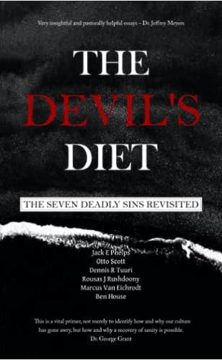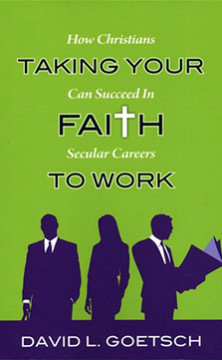Recently, I was involved in the
Conversation at Theopolis Institute concerning the Manosphere. My long-time
friend, Peter Leithart, a man to whom I am indebted for much of what I know of
biblical theology, wrote one of
the essays for the Conversation in which he addressed five different yet
interrelated topics. The format did not allow me to engage a few of the topics
Leithart addressed, so I would like to continue the conversation.
Two areas of Leithart’s essay that are of particular
interest to me are 1) the patriarchy and 2) the masculinity of Jesus, particularly
as it is expressed in his Passion.
The patriarchy is obviously on Leithart’s mind in the essay.
Even though the word “patriarchy” was not used by the previous two authors in
the Conversation, Leithart sees it as something of an undercurrent in their
writing as well as a topic many of friends have broached. He homes in on the
etymology of the word (making linguists everywhere shift in their seats
wondering if he is going to build an argument based on strict etymology rather
than usage/semantic domain). While Leithart is correct that the etymology of
the word speaks of “father-source,” that is not generally how the word is used in
normal parlance. Patriarchy is normally understood as “father rule” (arche can speak of a principality or
rule as a derivative of being a “source” or “beginning”). Even if Leithart
concedes the point that patriarchy refers to father-rule, I can see where the
use of the term can be a little muddled in a context in which we are really
talking about men, in general, ruling. Maybe it would be appropriate to use the
term “androcracy,” man-rule. However, this does not need to devolve into a
logomachy. The substance of the conversation concerns whether or not men should
be the primary rulers in the home, church, and society and what that means in
intersexual relationships in each of these spheres. (I might annoy the reader
by using one or the other or both words throughout this response. Not many
people up to this time in history have had a real issue with the word
“patriarchy,” but I am an irenic guy. I can go with the flow in order to deal
with the substance.)
Patriarchy/Androcracy is concerned with cultures–home,
church, society–and not so much with interpersonal relationships between
individual men and women generally. The questions are: Should these societies
be ruled in a hierarchy with men in the primary place of rule? Should they be
co-ruled so that men and women share the same type of authority? Should women
be the primary rulers? Added to these questions, we must ask, Is the nature of
authority and hierarchy from creation fluid so that it changes from one thing
in the beginning to something else as creation matures into and throughout the
process of new creation?
My position is that God created the man to be the primary
ruler of the home, church, and society. The woman’s role includes rule with the
man, but that rule is not the same kind and is subordinate to the man. Leithart
emphasizes the co-rule of the man and woman, Adam and Eve, Christ and the
church, noting that distinctions need to be recognized and the relationship
between the two is asymmetrical (under #3 in his essay), but emphasizes that
the church, for instance, should have an atmosphere of “neither male nor
female” in accordance with Galatians 3:28. He did not have much space to work
that out, so I hope this continuing conversation will bring some clarity on the
nature of this asymmetrical co-rule.
Both of us ground our positions firmly in the Scriptures,
appealing to them as the final authority. However, there are points at which we
seem to be viewing the world through the lens of Scripture in different ways.
That’s understandable. We all still have blurred vision. That’s why we have
these conversations.
God’s authoritative revelation is the Scriptures. But God
also speaks without words, a truth that we learn from what God himself says. In
Psalm 19 we learn that “the heavens declare the glory of God and the firmament
proclaims his handiwork. Day to day pours out speech, and night to night
reveals knowledge. There is no speech, nor are there words, whose voice is not
heard.” (Ps 19:1-3) What God creates speaks wordlessly in the substance of its
creation, how it is created, and in what order he creates the various entities.
Why did he create this animal this way over against the way he created another
animal? Why did God not create all things at once instead of in the revealed
sequence? All of these aspects of his creation speak; they are the revelation
of God’s glory. We cannot have perfect or even proper understanding apart from
special revelation, but looking through the lens of Scripture, we can interpret
the creation, hearing what God says wordlessly through it. The Scriptures
themselves teach this hermeneutic, particularly in this area of the rule of
man.
In 1Timothy 2:9-15 Paul bases the proper order of the church principally on the fact that Adam was created first and then Eve. For this reason, a woman is not to teach or exercise authority over a man within the church. The same hermeneutic is used in 1Corinthians 11.8-9 when Paul says that the man was not made from the woman by the woman from the man. Paul concludes by the way and order of creation that the woman is the glory of the man and made in man’s image. From that point on there is a mutual dependence between the man and the woman because the man is born of the woman. Paul is not only teaching us what to believe, but he is also teaching us how to read the Scriptures as well as creation through the Scriptures. What Paul says about the nature and order of creation are not the limits of the way we are able to use this creational hermeneutic. Like Paul using allegory or parable in Galatians 4 to speak about how two women are two mountains or Matthew using Hosea’s phrase “out of Egypt I have called my son” to refer to Jesus, so in this creational hermeneutic we are given principles of looking at creation through the lens of Scriptural categories, precepts, principles, and patterns to interpret the creation.
For instance, in intersexual relationships, we can start
with something obvious: the male and female anatomy. God commanded the man and
woman to be fruitful and multiply, but there is no special revelation
instruction on how this is to take place or who has what role in procreation.
All of that is patently obvious to us now, but it is something that might not
have been to the first man and woman (though I am sure they figured it out
quickly!). The man and woman had to figure it out, apparently, through anatomy
and “doing what comes naturally.” The man is obviously equipped to
penetrate and plant seed in the woman because that is the nature of his body.
The woman is equipped to receive the man and his seed as well as gestating and
giving birth to a baby because that is the nature of her body. The woman’s
sexual organs, her bone structure (especially in the pelvic region), and her
breasts speak to tell us that she is
the one to conceive, carry, give birth, and nurture a child. God speaks through the way he made us.
This is also true about the man’s bone density and muscle
structure making him more tolerant of outside physical stresses that come with
his revealed duty to work the ground and guard the Garden. God speaks through the structure of the
man’s body, and that is interpreted through Scripture.[1]
This truth is also why scientific and socio-scientific
evidence of sexual differences can be used to help us understand intersexual
dynamics. Leithart does not dispute this but thinks that nothing normative can
be drawn from the evidence. I believe that much of the evidence, when viewed
through the lens of God’s creative process and the vocations of men and women
specifically revealed, is instructive about the nature of reality (i.e., the
way God created and sustains the world).
All of this gets us to the question of the patriarchy or the
androcracy itself. Adam was created as the head of humanity. He is the source (patriarch in the way Leithart
suggests is a more proper way to think of patriarchy) as well as an authority
in whom is invested the destiny of mankind. The initial relationship between
the man and the woman is not limited to marriage. James Jordan asserts (and I
am certain Leithart agrees), the primary relationship between the first man and
woman is as liturgical partners.[2] This
first relationship is archetypal of societal structures. Men are given the
position of rule. Androcracy structures the world and history. Adam is the
head–source and authority–of the first creation humanity. Christ Jesus, the
last Adam, is the head–the source and authority–of the new creation (cf. Rom
5.12-21; 1Cor 15:21-22, 45). Reality is structured as a patriarchy or
androcracy. If this is true of the meta-structure of the world, how can it not
be true of the smaller “worlds” created to reflect and live in harmony with
that meta-structure?
The Scriptural declarations and commands, therefore, that
men are heads of their wives and that
only males may occupy the primary authoritative roles in the church (e.g.,
pastor) are not arbitrary commands or thin types. They are not merely
superficial “roles” assigned to males that could just as well be
handled by females, only held back by a bald prohibition by God. Androcracy is
reality. Societies at every level are in tune with reality when there is
masculine leadership. When women and children lead society, it is a curse (Isa
3:12) because it is a distortion of the created order.
None of this means that women have no sort of rule whatever.
They do, but it is of a different sort and is subordinate to men’s rule.
Neither does this mean that every woman must submit to every individual man.
However, it does mean that where there are organized cultural situations, women
should desire and submit to male leadership; they should want male/masculine
leadership in society.
Women enjoy their own sort of rule, and they are quite
powerful within a well-ordered androcracy, wielding influence with men as
husbands and sons. They are co-rulers with man as Leithart points out. But
their rule is of a different kind, in different areas, and is under the
headship of men. This is not only proven from the creation and its typology
into all societal relationships, but it is also proven in the relationship
between Christ and his church.
The church rules with Christ. The Bible is quite clear on
this. But the church does not have equal authority with Christ. It is improper,
for instance, to say, “The church is Lord” in the same way that we say, “Jesus
is Lord.” We recognize that Christ is the head of the church, exercising
authority over her. He has given authority to the church to rule with him, but
he remains the authority over the church and is responsible for everything done
by her. There is a division of labor between the man and the woman that is
fixed and non-transferable. One might dare to say that men and women were made for specific purposes, and those
purposes include different sorts of rule in relation to one another.
To reiterate, the patriarchy or androcracy is not a matter
of choice; that is, it is not an option that God puts out there for us to
implement in our homes, churches, or society at large. The androcracy is. It is reality, unalterably. We
submit to it and accept our responsibilities to our blessing or fight God’s
created order to our curse.
A thin complementarianism will not be able to withstand the
assaults from the Feminist movement, especially when they see Scriptural
commands as “culturally conditioned” and/or the fact that we have matured past
those strictures and structures within the new creation. Jesus and Paul both
appealed to the original creation with all of its structures as normative even
in and throughout the new creation. The new creation is about restoring the old
and taking it to its fullest glory, not growing out of it. Consequently, any
appeal to a “neither male nor female” that muddles the hierarchy,
first, has Paul contradicting himself because of his insistence on the
differences elsewhere, and, second, is in danger of losing male leadership
altogether because of the sheer wispiness of the foundations.
Rejection of the androcracy was one reason for the fall and
since then all men and women have fought this order. Men are sloths, not
wanting to take their responsibility to love women by leading, protecting, and
providing for them. Women are always pushing to rule men. All of this rebellion
against androcracy or patriarchy does nothing but bring disorder and
disharmony. We must get in line with God’s reality.
There have been many instances throughout history in which
the patriarchy has been twisted so that men rule tyrannically, crushing those
who have been given to their care. This has happened inside and outside the
church. Consequently, when some hear the word “patriarchy,” there is a negative
visceral reaction. But as with any other aspect of God’s creation, the abuse of
some does not nullify the goodness of creation. Because gluttons abuse food
does not negate the fact that food is a blessing from God. Because drunkards
abuse alcohol does not mean that alcohol cannot be used to God’s glory. Because some engage in illicit sexual
activity does not mean that sex is to be abjectly rejected. So it is with the
patriarchy (or androcracy, if that makes it more palatable). The answer is not
to capitulate to a restructuring of God’s created order (the approach of
Feminism, for example). Rather, it is for men to take up their responsibilities
to be the men God called them to be.[3]
The patriarchy is not the only area of interesting
conversation in Leithart’s response. Toward the end of Leithart’s essay, he
spoke of Jesus’ manhood or masculinity. Masculinity cannot be defined
succinctly, for it involves many things. However, there are some basics about
masculinity that we know from Scripture as well as how we read creation with
the spectacles of Scripture. God created man to lead, guard, and provide. He
has a mission toward the world, and the woman, the feminine, is his helper. He
is to act upon the world, changing it (dominion). He is not to be passive
toward the creation. He is in submission before God and active toward the
world.
Leithart notes that there were some aspects about Jesus that
people in the Greco-Roman world have recognized as manly; namely, his acts of
power. But then, in his death, he “subverts ancient masculinity” (under #4). He
uses Aristotle’s model of male-female as active-passive respectively to say
that Jesus undermined this understanding by becoming passive in his death.
But did he?
From the perspective of some, possibly. However, to frame
even the crucifixion in terms of passivity is problematic. Jesus is far from
passive. In his death, onlookers may see passivity, but he makes it clear
before and throughout his trial, suffering, and death that he is in complete
control. No man takes his life (passive). He gives it (active; cf. John
10:17-18). In laying down his life Jesus is acting upon the world and for his
bride. He is being masculine. He is giving his life for a purpose; his purpose,
his mission.
I’m not even sure that Jesus’ crucifixion would have
redefined masculinity in the ancient world. Leon Podles in his book, Losing the Good Portion: Why Men are
Alienated from Christianity, speaks of how Jesus is masculine in terms of
Greco-Roman categories.[4] The
Roman soldier at the cross certainly believed Jesus was a man and acting manly.
He confessed “Truly this man was the Son of God” (Mark 15:39). Saying that the
Greco-Roman world would have seen Jesus as other than masculine is questionable.
However, the Greco-Roman world would have understood Jesus’
masculinity is not the fundamental question. Does Jesus act in a masculine way
as the last Adam? Is he masculine as God defines masculinity? Of course, the
answer is, “Yes.” That masculinity does not show a “feminine side” at the
cross. Jesus is masculine all the way through his suffering and death.
First, as stated, Jesus is giving his life, no one is taking
it from him. This is his mission in submission to the Father. Jesus avoided
death many times before the cross, and he made clear throughout his trial that
he was not a helpless victim. Second, viewing the cross in isolation from the
rest of Jesus’ acts, especially his resurrection, gives a truncated and
distorted picture of what masculinity looks like. Jesus lays down his life and
takes it up again. He is not a weak, effeminate, helpless victim, but one who
remains in control the entire time doing exactly what he came to do.
The full picture of masculinity is not the crucifix,
especially when interpreted as Jesus being passive. The full picture of
masculinity is seen from the womb to being seated at the right hand of the
Father, riding out on a white horse with King of kings and Lord of lords on his
robe and thigh, destroying his enemies (Rev 19:16). Laying down his life was a
vital part of his masculine mission, his mission as the Man.
As assaults on masculinity and the patriarchy relentlessly
besiege the church, it is helpful to have these conversations and clarify why
structures ought to be ordered the way they are and why men need not be cowered
by assaults on genuine masculinity. I pray that this furthers the conversation
for the health of the church and the glory of God.
[1]
The examples could continue. If you are interested in further reflection on
this, I highly recommend Werner Neuer’s book Man & Woman in Christian Perspective (Wheaton: Crossway Books,
1991).
[2]
http://www.biblicalhorizons.com/rite-reasons/no-86-liturgical-man-liturgical-women-part-1/
[3]
Discussion of what constitutes a biblical patriarchy/androcracy goes far beyond
the scope of this response. That will have to be another conversation at
another time.
[4]
See pp. 22-42.
Read more
























